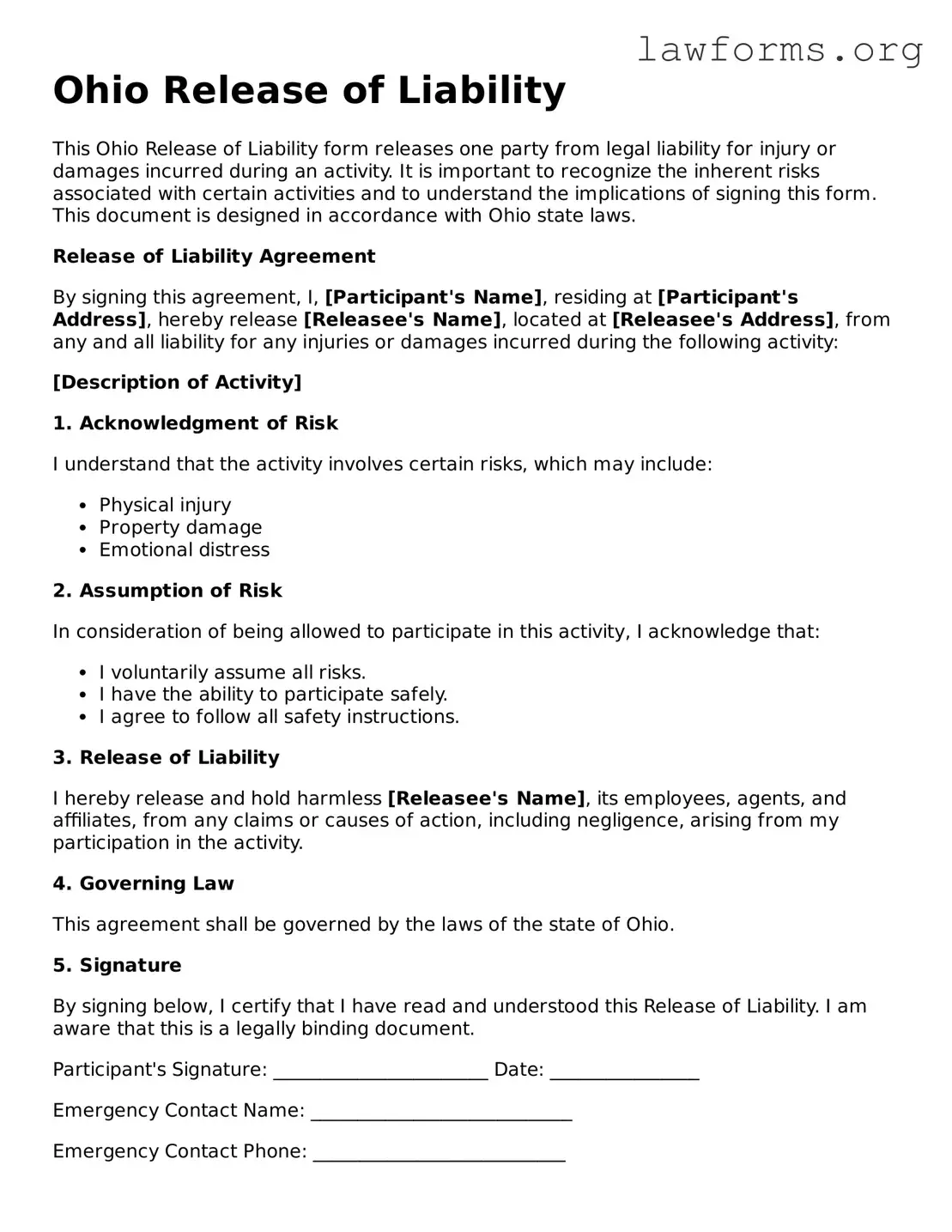Ohio Release of Liability
This Ohio Release of Liability form releases one party from legal liability for injury or damages incurred during an activity. It is important to recognize the inherent risks associated with certain activities and to understand the implications of signing this form. This document is designed in accordance with Ohio state laws.
Release of Liability Agreement
By signing this agreement, I, [Participant's Name], residing at [Participant's Address], hereby release [Releasee's Name], located at [Releasee's Address], from any and all liability for any injuries or damages incurred during the following activity:
[Description of Activity]
1. Acknowledgment of Risk
I understand that the activity involves certain risks, which may include:
- Physical injury
- Property damage
- Emotional distress
2. Assumption of Risk
In consideration of being allowed to participate in this activity, I acknowledge that:
- I voluntarily assume all risks.
- I have the ability to participate safely.
- I agree to follow all safety instructions.
3. Release of Liability
I hereby release and hold harmless [Releasee's Name], its employees, agents, and affiliates, from any claims or causes of action, including negligence, arising from my participation in the activity.
4. Governing Law
This agreement shall be governed by the laws of the state of Ohio.
5. Signature
By signing below, I certify that I have read and understood this Release of Liability. I am aware that this is a legally binding document.
Participant's Signature: _______________________ Date: ________________
Emergency Contact Name: ____________________________
Emergency Contact Phone: ___________________________
Witness Signature: _______________________ Date: ________________
